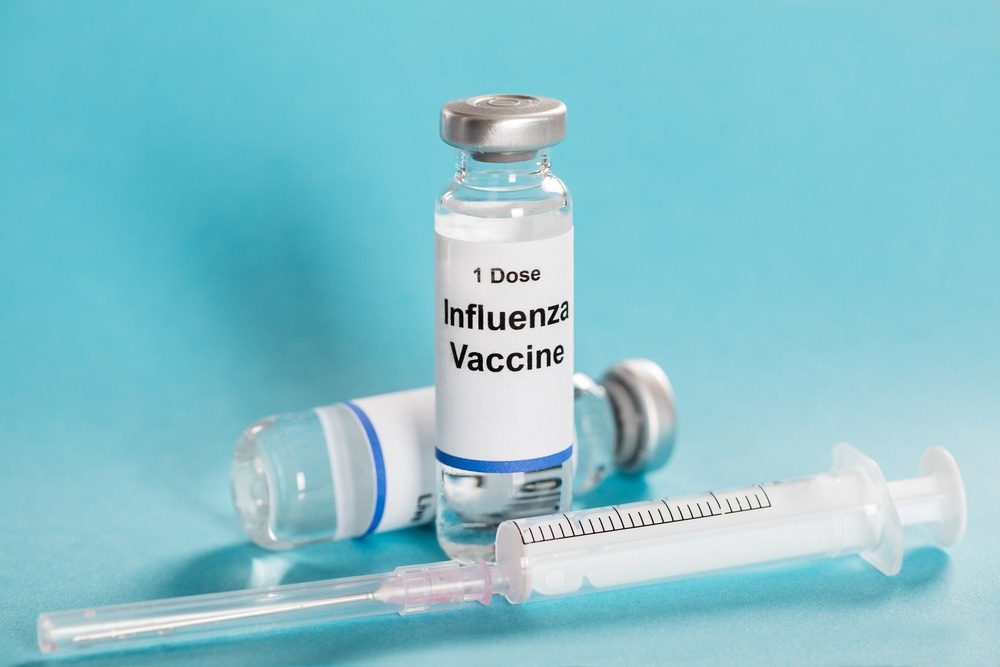In a recent article published in Clinical Infectious Diseases, researchers estimated influenza vaccine effectiveness (VE) in patients aged ≥6 months seeking outpatient care for acute respiratory illness (ARI) due to the influenza A(H3N2) virus between October 2021 and April 2022 in the United States (US).

Background
Since the beginning of the severe acute respiratory syndrome coronavirus 2 (SARS-CoV-2) pandemic, the US has experienced meek influenza activity. However, it reemerged during 2021-2022 during the predominance of Omicron, resulting in an estimated eight to 13 million influenza cases and 3.7 to 6.1 million influenza-related hospital visits. Thus, this time was favorable for estimating VE against influenza A(H3N2) despite the strong correlation between vaccines of these two viruses.
About the study
In the present study, the researcher staff screened all patients over six months old who sought outpatient medical care or clinical SARS-CoV-2 testing at a US Flu VE Network hospital across seven US states. They conducted the study among all patients aged ≥6 months who had ARI, cough, fever, and ageusia or anosmia for VE estimates for the 2021–2022 influenza season. Additionally, they stratified these estimates by age and early vs. late influenza activity.
The team collected oropharyngeal swabs but only nasal swabs from children under two years. They used them to test for influenza and coronavirus disease 2019 (COVID-19) via reverse-transcriptase polymerase chain reaction (RT-PCR). They included those who had cough or fever, sought clinical testing within seven days of illness onset, and excluded those who were SARS-CoV-2-positive from the VE analysis. The control group comprised patients testing negative for influenza and SARS-CoV-2.
The researchers used logistic regression models incorporating a test-negative design to estimate influenza vaccine VE by 100% x (1 – adjusted odds ratio [OR]). Additionally, they performed a sensitivity analysis with participants positive for SARS-CoV-2.
Study findings
Though its circulation remained low relative to SARS-CoV-2, influenza A(H3N2) viruses were predominant during the 2021-2022 duration. Accordingly, influenza positivity ranged between 0% and less than 10% weekly throughout the study period peaking in mid-January 2022.
Although 7031 participants enrolled in the study, 6244 participants made it to the final dataset. Of these, 7% (468) tested positive for influenza, and only 440 were A(H3N2) cases. Whole genome sequencing characterized that 47% of the influenza A(H3N2) cases belonged to 3C.2a1b subclade 2a.2.
Though the current study dataset was not large enough for detecting statistically significant VE below 30% even amid high vaccine coverage, the researchers made two key observations. First, the influenza vaccines displayed a VE of 36% against A(H3N2)-induced illnesses in all participants under 50 years. Second, among adults ≥ 50 years, the observed protection against RT-PCR-confirmed influenza was statistically insignificant.
Most 2021-2022 egg-, cell- and recombinant-based influenza vaccines used the same clade, and its uptake was higher among US Flu VE Network participants, including older adults. While the vaccine component used clade 3C.2a1b subclade 2a.1, H3N2 viruses circulating in the US during this time were of subclade 2a.2. It remained unclear whether adults ≥ 50 years responded aberrantly to the mismatched vaccine component or elicited different cross-protective antibodies.
Interestingly, the removal of participants positive for SARS-CoV-2 increased influenza VE point estimates by >5% between October 2021 and April 2022. These participants were less likely to receive influenza vaccine resulting in lower estimates of influenza VE, a bias that had the highest effect during high COVID-19 prevalence.
Conclusions
Overall, influenza vaccines in the 2021–2022 season conferred similar protection as the vaccines in the influenza A(H3N2) seasons before the COVID-19 pandemic began. It cut down ARIs with a cough by one-third overall. In the 2022-2023 influenza season, updating the A(H3N2) vaccines with a component representing the 2a.2 subclade might improve the conferred protection, especially if a similar clade of viruses continues to circulate in the US.





